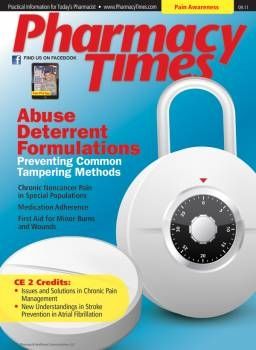Publication
Article
Pharmacy Times
Pain Management


Mary Barna Bridgeman, PharmD Rupal Patel Mansukhani, PharmD
Case 1
LB is a 20-year-old man who approaches the pharmacy counter at his college’s student health center asking for an OTC medication to alleviate “tennis elbow.” A member of the school’s varsity baseball team, he has been practicing for the upcoming season. After a particularly rigorous workout the day before, he began experiencing pain and mild swelling in his right elbow. LB is not allergic to medication and has no chronic medical conditions. He takes a multivitamin once a day and used acetaminophen to alleviate this type of pain previously, but now he is looking for something “stronger” now to allow him to continue his training on schedule. Describe pharmacologic and nonpharmacologic interventions to help manage LB’s symptoms.
Answer
Sports-related overuse injuries, including tennis elbow or tendonitis, are common afflictions affecting professional and recreational athletes alike. Tendon inflammation can occur due to acute injury to a tendon sheath or chronic overuse of a particular joint or body part, and is usually characterized by pain, inflammation, tenderness, or swelling of the affected area.1 Risk factors for sports-related tendon injuries include older age, inadequate training or poor technique, prolonged duration or intensity of activity, and improper equipment use.1 Goals of treatment for LB’s complaints include alleviating perceived pain and inflammation, restoring function so that he can continue training, and preventing reinjury or chronic pain.
Nonpharmacologic therapy for various musculoskeletal injuries consists of resting the affected body part, icing the injured area, utilizing gentle compression with an elastic support or brace, and elevating the site above the level of the heart for a few hours each day to minimize pain (commonly referred to by the acronym RICE).1 Counsel LB to allow adequate time to warm up and stretch the tendons before practice.
OTC treatments, including oral or external analgesics, may also be used for symptom relief and are particularly effective when used within the first few days of injury. Nonsteroidal anti-inflammatory drugs (NSAIDs) are a treatment of choice for alleviating tendon pain and inflammation. Remind LB that resting the injured area until pain is resolved or at least 2 to 3 days is optimal to promote tendon healing and to prevent continued injury or reinjury of the elbow.
Case 2
DC is a 25-year-old woman who presents to your pharmacy looking for a recommendation for a headache medicine. DC describes recently being evaluated by her physician for migraine headaches. She explains she experiences sudden-onset, unilateral, throbbing, moderate pain that is not accompanied by visual symptoms. She notes these headaches occur in a predictable, cyclic pattern and seem to precede the onset of her menstrual cycle each month. She denies allergies to medications and reports taking only an oral contraceptive tablet once daily. Based on the type of headache DC is suffering from, identify an appropriate analgesic medication for alleviating her pain.
Answer
DC has been diagnosed with migraine headaches, a medical complaint that affects an estimated 10% of women and commonly occurs prior to the onset of menses and during the premenstrual period.2 Consider counseling DC to avoid potential migraine triggers, including foods that can precipitate changes in cerebral blood flow, such as alcohol and caffeine. Managing stress, consuming a balanced diet, avoiding hunger or significant fluctuations in blood glucose levels, and getting adequate rest each night to prevent fatigue are other important strategies. The use of an oral contraceptive product may increase DC’s risk of migraines; remind her to speak with her physician before modifying therapy.2
NSAIDs or OTC salicylates are the most appropriate agents to recommend for mild to moderate migraine headache pain relief. These agents work best when taken at the onset of a headache to attenuate the pain and to prevent worsening migraine symptoms that can persist for hours or days. As DC’s headaches occur in a predictable pattern, counsel her to use the selected product in a scheduled manner before the onset of a headache, such as on the first day of her menstrual cycle, and continue to utilize the medication while symptoms persist. If she experiences severe symptoms, worsening symptoms, or symptoms persisting longer than 10 days, physician referral is warranted.
Dr. Mansukhani is a clinical pharmacist in South Plainfield, New Jersey, and clinical assistant professor, Ernest Mario School of Pharmacy, Rutgers University. Dr. Bridgeman is an internal medicine clinical pharmacist in Trenton, New Jersey, and clinical assistant professor, Ernest Mario School of Pharmacy, Rutgers University.
References
1. Wright E. Musculoskeletal injuries and disorders. In: Berardi R, Ferreri S, Hume A, et al, eds. Handbook of Nonprescription Drugs. 16th ed. Washington, DC: The American Pharmacists Association; 2009:95-113.
2. Remington TL. Headache. In: Berardi R, Ferreri S, Hume A, et al, eds. Handbook of Nonprescription Drugs. 16th ed. Washington, DC: The American Pharmacists Association; 2009:65-82.






